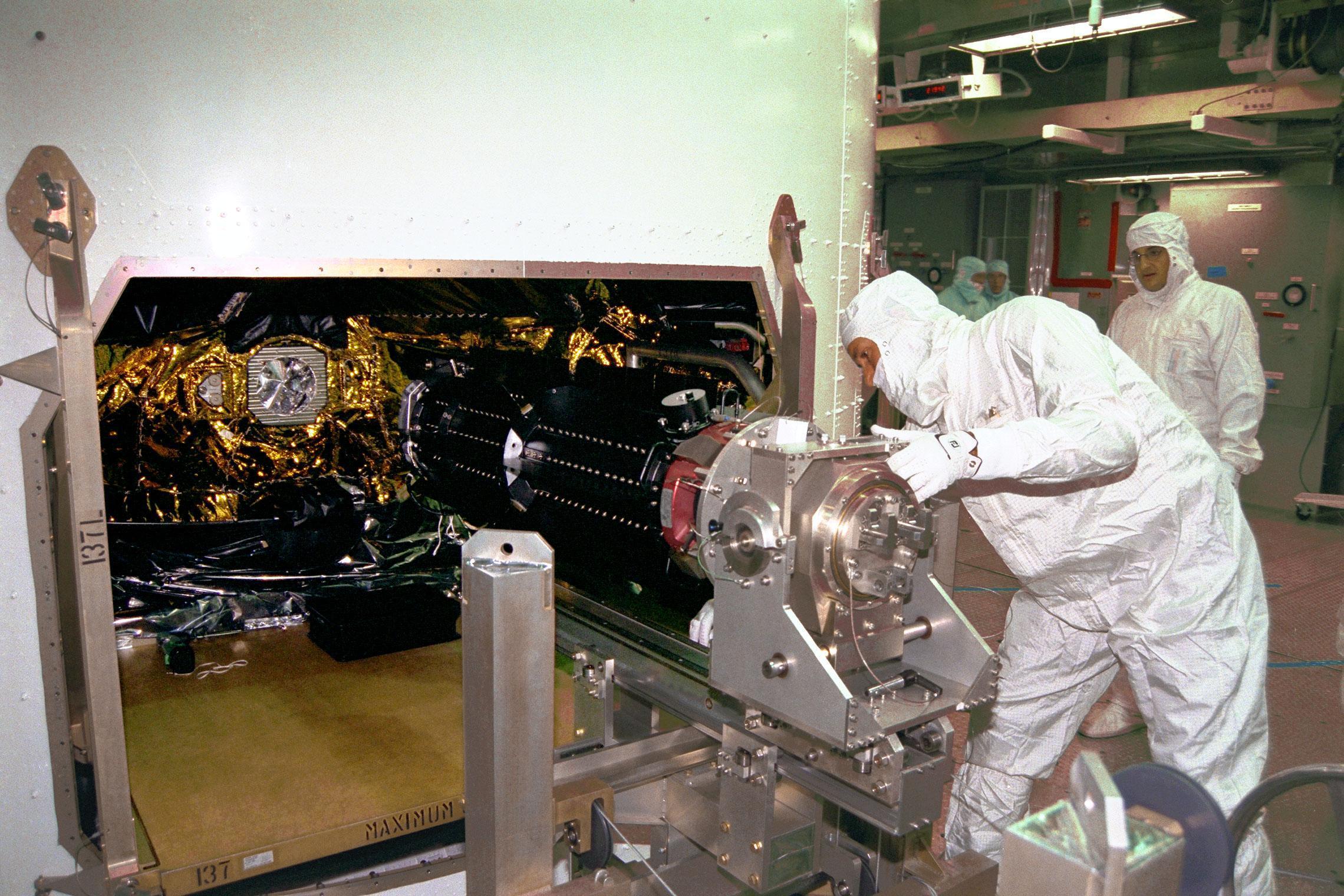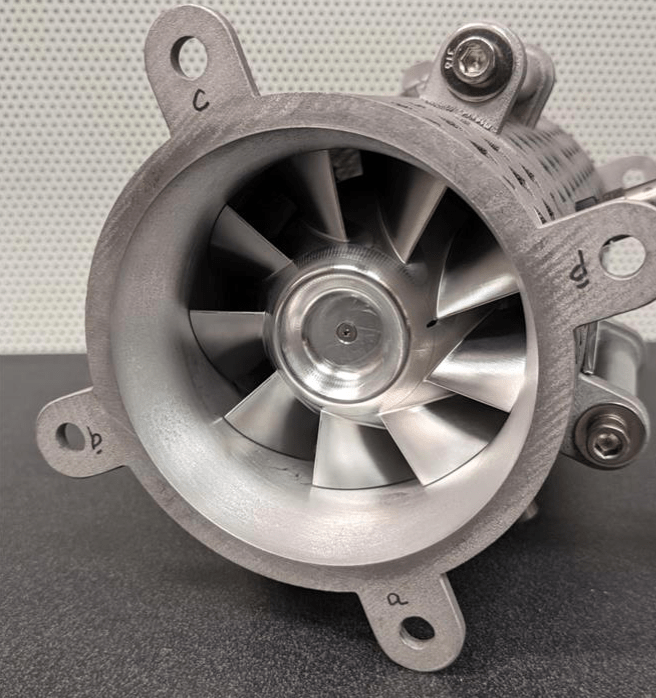The largest and most complex international construction project in space began on the steppe of Kazakhstan on Nov. 20, 1998. Atop its Proton rocket, the Zarya Functional Cargo Block (FGB) thundered off its launch pad at the Baikonur Cosmodrome into cold wintry skies. Zarya was built under contract to NASA by the Khrunichev State Research and Production Space Center in Moscow and served as a temporary control module for the nascent International Space Station (ISS). Nine minutes later, Zarya was in orbit and began unfurling its antennas and solar panels, seemingly coming alive in the airless environment of low Earth orbit. The launch of the first element of ISS kicked off an incredible journey of orbital assembly, operations, and science.

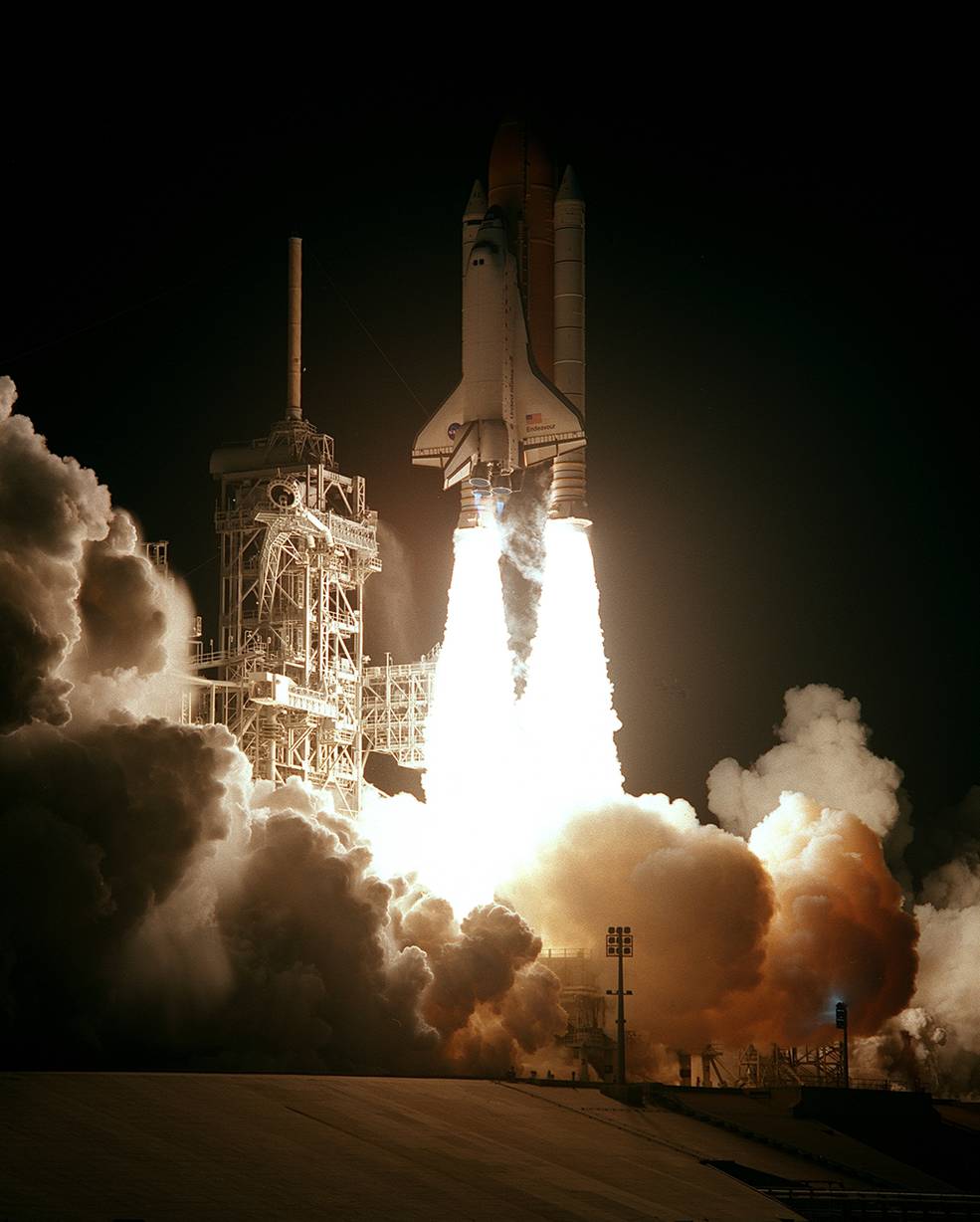

Left: Launch of the Zarya Functional Cargo Block from the Baikonur Cosmodrome. Middle: Launch of Space Shuttle Endeavour from the Kennedy Space Center on the STS-88 mission to deliver the Unity Node 1 module. Right: Zarya has been mated with Unity in the Shuttle’s cargo bay and astronauts are outside making connections between the two modules.
On Dec. 4, Space Shuttle Endeavour on the STS-88 mission roared off Launch Complex 39A at Kennedy Space Center in Florida, carrying the Unity Node 1 module in its cargo bay. Built by The Boeing Corporation at their facility at the NASA Marshall Space Flight Center in Huntsville, Alabama, Unity was the first American component of the ISS. Two days after launch, Endeavour and her six-person crew rendezvoused with Zarya, and using the Shuttle’s robotic arm, captured the Russian module and mated it with Unity. Designed and built by engineers thousands of miles apart and never joined together on Earth, the first two modules of ISS fit perfectly together when they met in space. Spoiler alert: this first linkup foreshadowed similar success during the entire assembly of ISS. The STS-88 crew spent the next few days making connections between the two modules before releasing the newly formed but still embryonic ISS. This marked the first step in the multi-year assembly of ISS.




Launch vehicles used to assemble ISS: (left to right) Space Shuttle, Proton, Soyuz, and Falcon 9. Rockets are not to scale.
To date, assembly of ISS has required a coordinated international effort. Although assembly of the United States On-orbit Segment (USOS), i.e., those components managed by the United States, Japan, Europe, and Canada, is essentially complete, the modular nature of ISS would allow for additional modules or hardware to be potentially added at a later date. Several future modules remain to be added to the Russian segment such as the Nauka research module. Up to now, assembly has required 37 Space Shuttle flights, 2 launches each of the Russian Proton and Soyuz rockets, and 3 commercial Falcon 9 vehicles provided by the Space Exploration Technologies Corporation (SpaceX) of Hawthorne, California. Additional vehicles have provided for crew rotation as well as logistics and maintenance for the facility. The assembly and maintenance of ISS would not have been possible without the hundreds of hours of Extravehicular Activity (EVA), or spacewalks, or without extensive robotic operations.
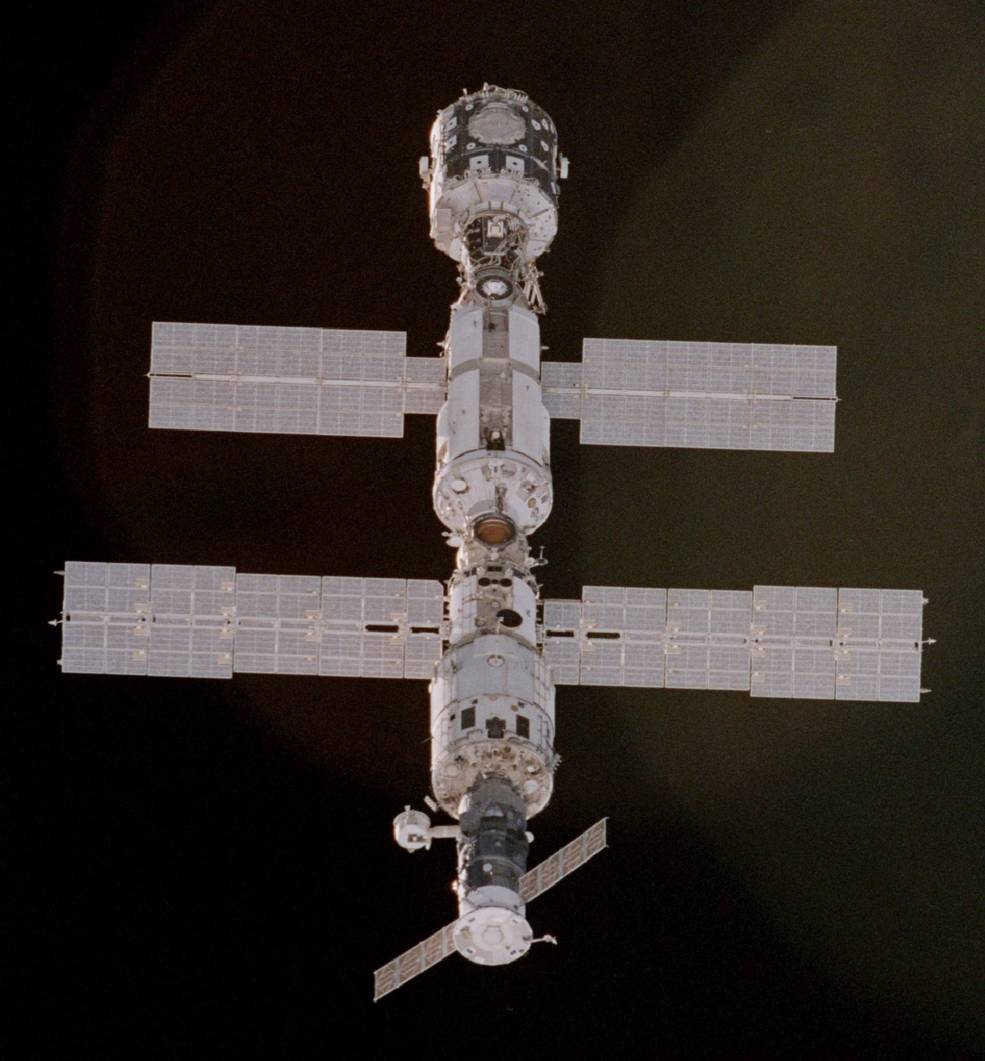

Left: The addition of the Zvezda Service Module enable permanent occupancy of ISS. Right: The first crew to live and work aboard ISS (left to right) Krikalev, Shepard, and Gidzenko.
In July 2000, the Zvezda Service Module arrived at the station, a key facility to permit long-term habitation of ISS. On Oct. 31, the Expedition 1 crew of Commander William M. Shepard, Russian Flight Engineer Sergey K. Krikalev, and Soyuz Commander Yuri P. Gidzenko blasted off from Baikonur aboard the Soyuz TM31 spacecraft and docked with ISS two days later. A pre-launch NASA press release predicted that if all went well on that and subsequent missions, this would be the last time that saw no humans in space. That prediction has held true for nearly 20 years as international teams of astronauts and cosmonauts have kept ISS permanently occupied, performing the routine operations and maintenance on the station including dozens of spacewalks and conducting research in a wide array of scientific disciplines.
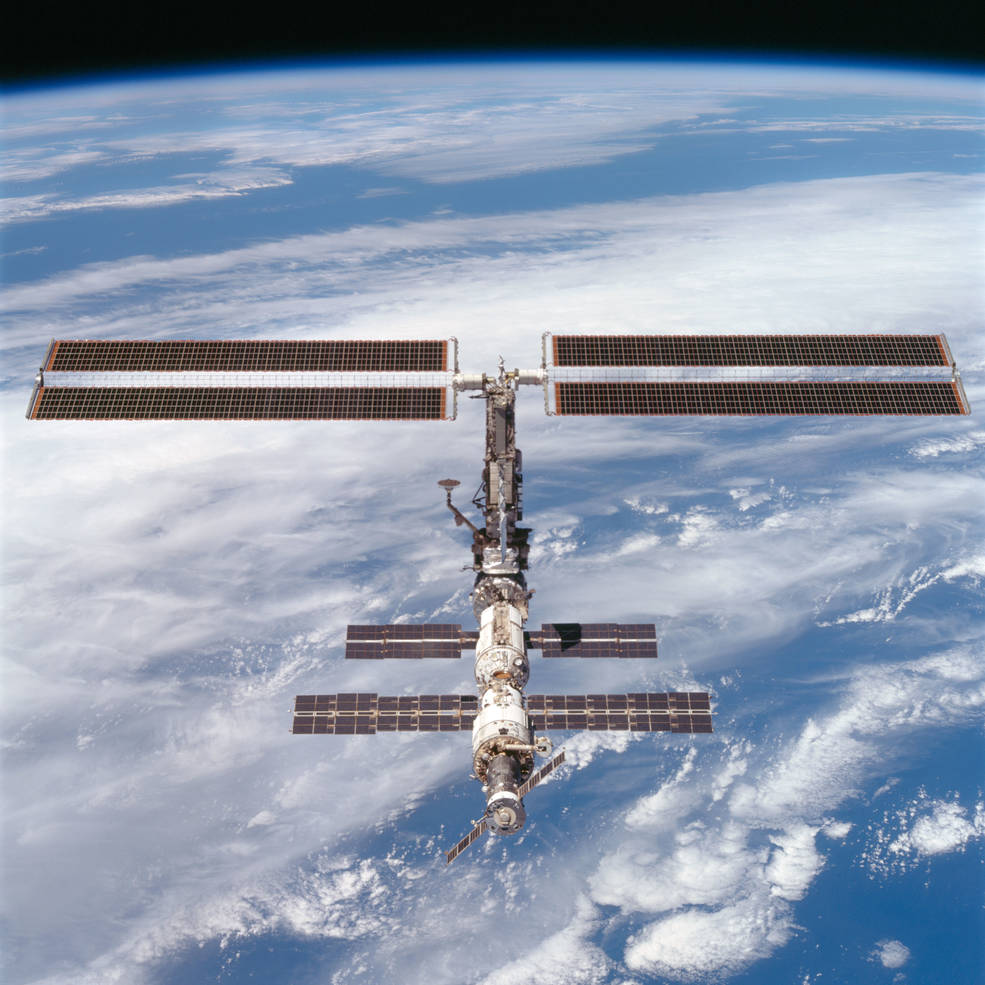
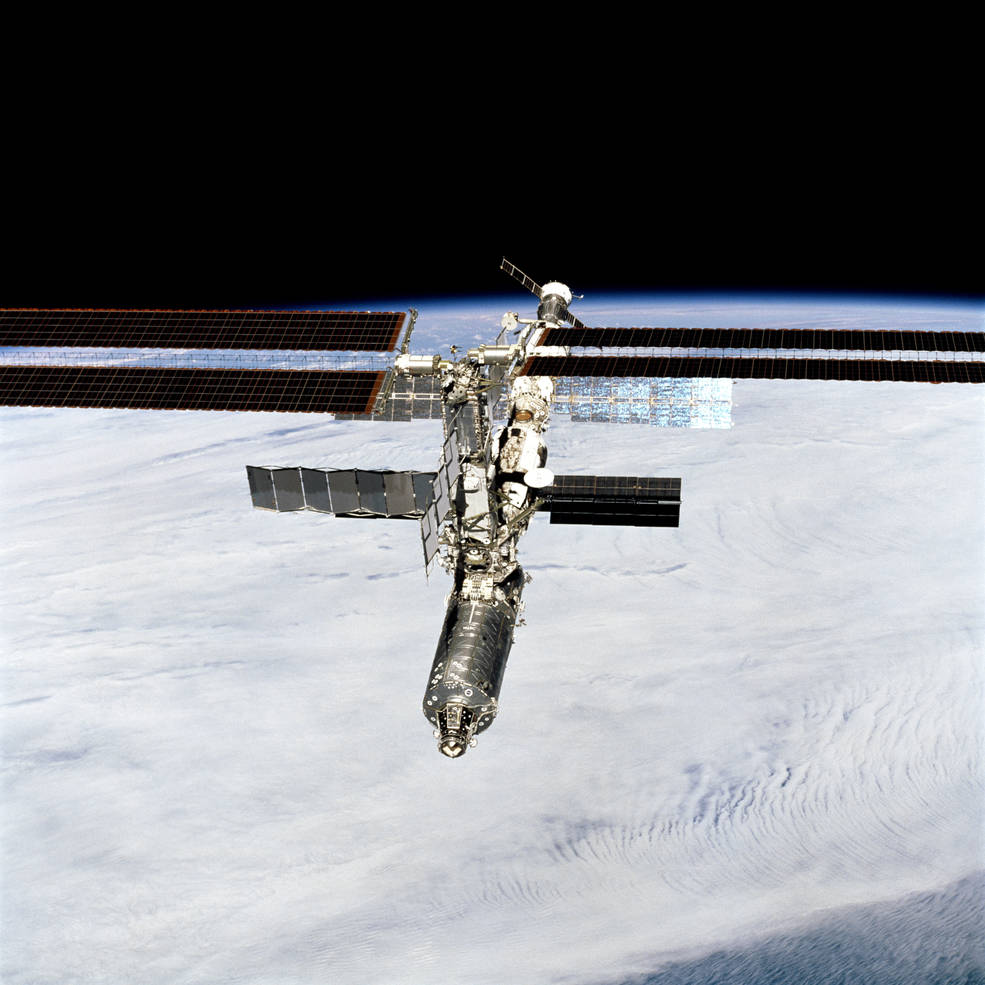

ISS as seen in late 2000 and early 2001. Left: The addition of the Z1 and P6 truss segments and the first set of USOS solar arrays for communications and power generation. Middle: The addition of the US Destiny laboratory module. Right: The addition of the Canadarm2 SSRMS robotic arm.
With a permanent crew of three on board, assembly truly began in earnest to develop the station’s capabilities. The Z1 truss segment added to the top of Node 1 added a communications capability while the P6 truss segment brought the first set of US solar arrays to significantly increase the available power. With the additional power, the US Destiny laboratory module came next along with the first research racks. The first of many crew rotations replaced the Expedition 1 crew with a new trio of astronauts, a scenario repeated many times in the life of ISS. The Space Station Remote Manipulator System (SSRMS), also known as Canadarm2 and one of Canada’s major contributions to ISS, added a robotic capability essential for future assembly and maintenance tasks.
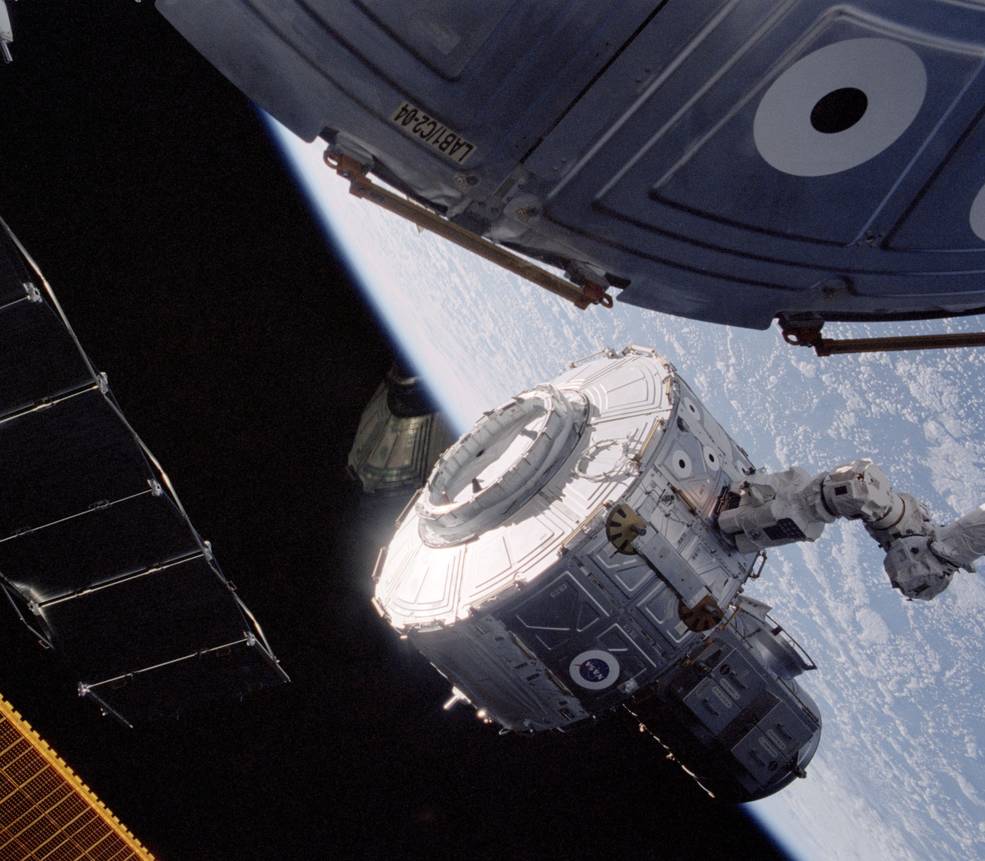

Airlocks for all: The addition of the US Quest airlock and the Russian Pirs airlock and docking compartment in 2001.
The addition of the US Quest airlock and the Russian Pirs docking compartment and airlock in 2001 provided an independent EVA capability for ISS. Until then, US EVAs could only be conducted while a Shuttle visited the station. Late in 2001 and into 2002 saw the initial build of the truss, the external backbone of ISS to provide for additional solar arrays for power and radiators for cooling.


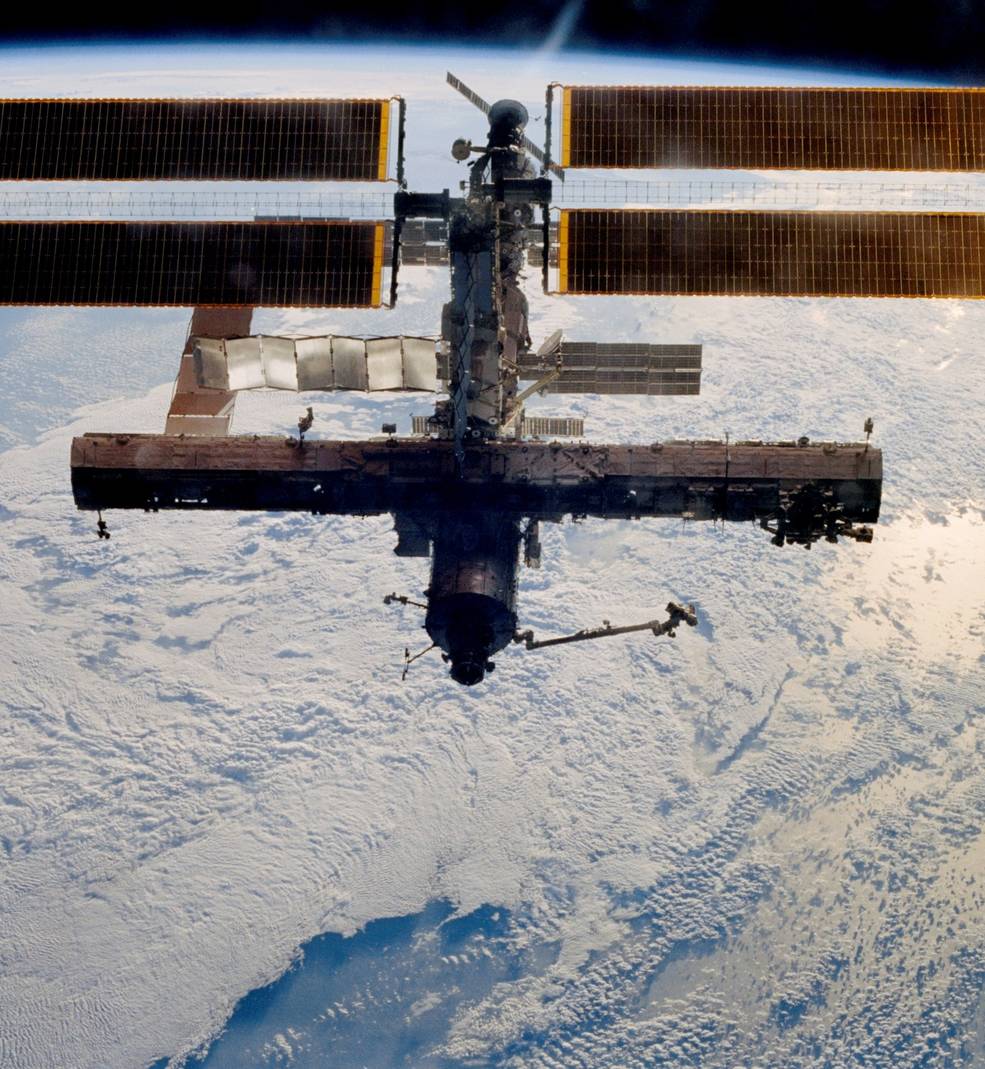
Changes to ISS in late 2001 and 2002. Building of the truss segment, the external backbone of the station. Left to right, the addition of the S0, S1, and P1 truss segments.
The Columbia accident on Feb. 1, 2003, halted Shuttle flights for more than two years and brought a temporary halt to ISS assembly. The lack of Shuttle resupply capability also reduced the ISS resident crew size from three to two. The resumption of Shuttle flights in 2005 saw the addition of new truss segments and new solar arrays, significantly increasing the power available to ISS to prepare for the addition of the International Partner (IP) research modules, enabling broader research activities. The ISS crew size also returned to three.


After the Shuttle returned to flight, the building of the external truss continued with the addition of the P3/4 (left) and S3/4 truss segments and solar arrays.
In 2007, the addition of the Harmony Node 2 provided new berthing ports for the addition of the IP research modules. Increasing the available habitable volume of ISS by nearly 20% provided room for the addition of new crew quarters needed when the ISS crew size increased to six. The IP research facilities arrived in 2008, first the ESA Columbus module followed by the Japanese Kibo elements.



Addition of the International Partner modules. Left: The Harmony Node 2 module provided the needed berthing ports. Middle: The ESA Columbus module. Right: The Japanese Kibo elements.
Another of Canada’s contributions to ISS, the Special Purpose Dexterous Manipulator (SPDM), also known as Dextre, arrived in 2008 to provide additional robotic capability to the station, including for ground-commanded telerobotic operations. With the addition of the final S6 truss segment and set of solar arrays in 2009, ISS reached the stage when the permanent crew size increased to six, dramatically expanding the research capabilities of the facility. Late in 2009, the Russian segment received the Poisk Mini Research Module-2, providing docking, EVA, and research capabilities.



Additions in 2009. Left: The Dextre SPDM. Middle: The final S6 truss segment and solar arrays. Right: The Poisk research module.
In 2010, the addition of the Tranquility Node 3 brought capabilities such as regenerative life support systems and additional volume for exercise equipment and a space toilet, invaluable for the six-person resident crews. Tranquility also brought the Cupola with large Earth-facing windows helpful for capturing visiting vehicles but also providing crewmembers with dazzling views of the home planet below. In October 2010, ISS surpassed the previous record of continuous human occupation of 3,645 days, or just shy of 10 years, set aboard the Mir space station between 1989 and 1999.


Additions in 2010. Left: The Tranquility Node 3. Right: The Cupola.
With all the major components already on ISS, the last few Space Shuttle missions added a few smaller but key elements. Four EXPRESS Logistics Carriers (ELCs) arrived in late 2009 and 2010, providing platforms for installing experiments requiring exposure to open space and for stowage of on-orbit spare parts. The Russian Rassvet Mini Research Module-1 arrived by Shuttle and was installed on the Russian segment, providing a platform for internal and external research experiments and acting as a docking port for visiting Russian vehicles. Rassvet also carried an equipment airlock to be installed later on the Nauka research module. To provide ISS with additional stowage volume, the Multi-Purpose Logistics Module (MPLM) Leonardo, previously used during Space Shuttle resupply missions, underwent modifications and added to ISS as the renamed the Permanent Multipurpose Module (PMM).
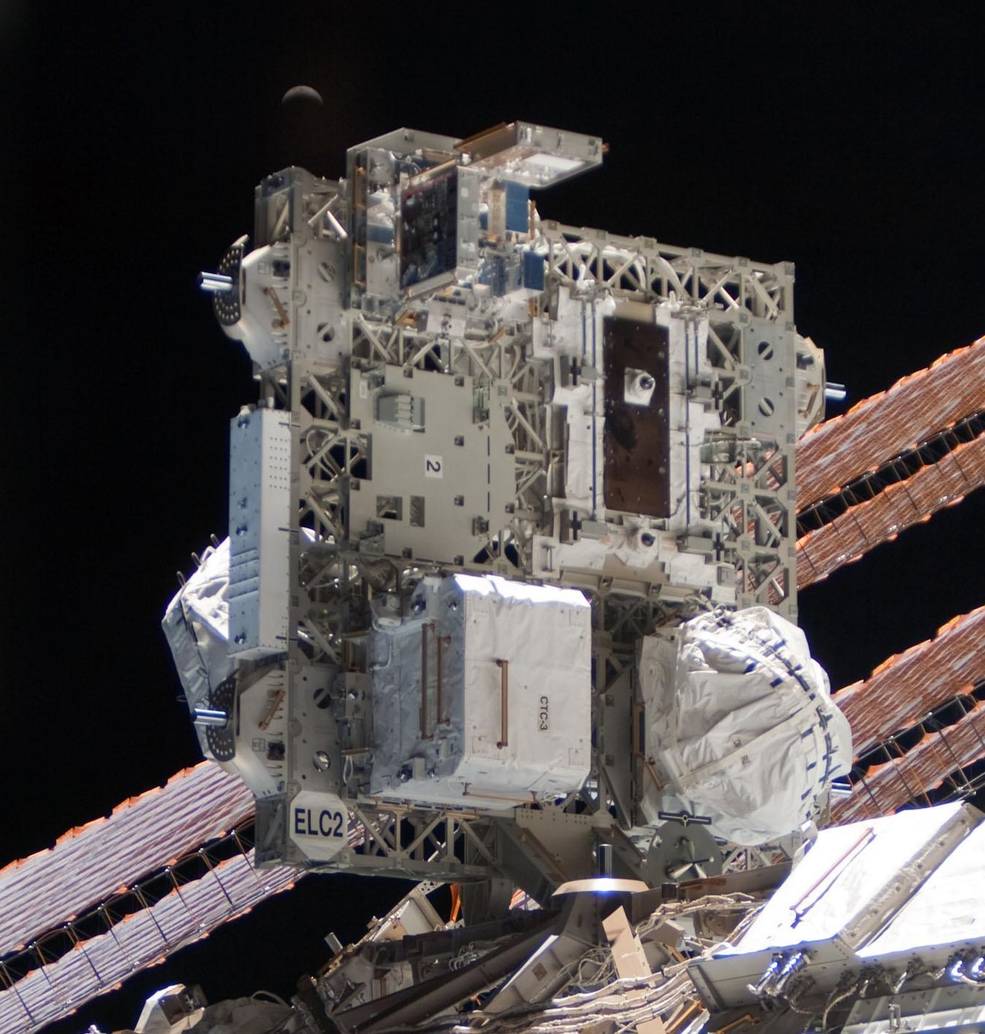

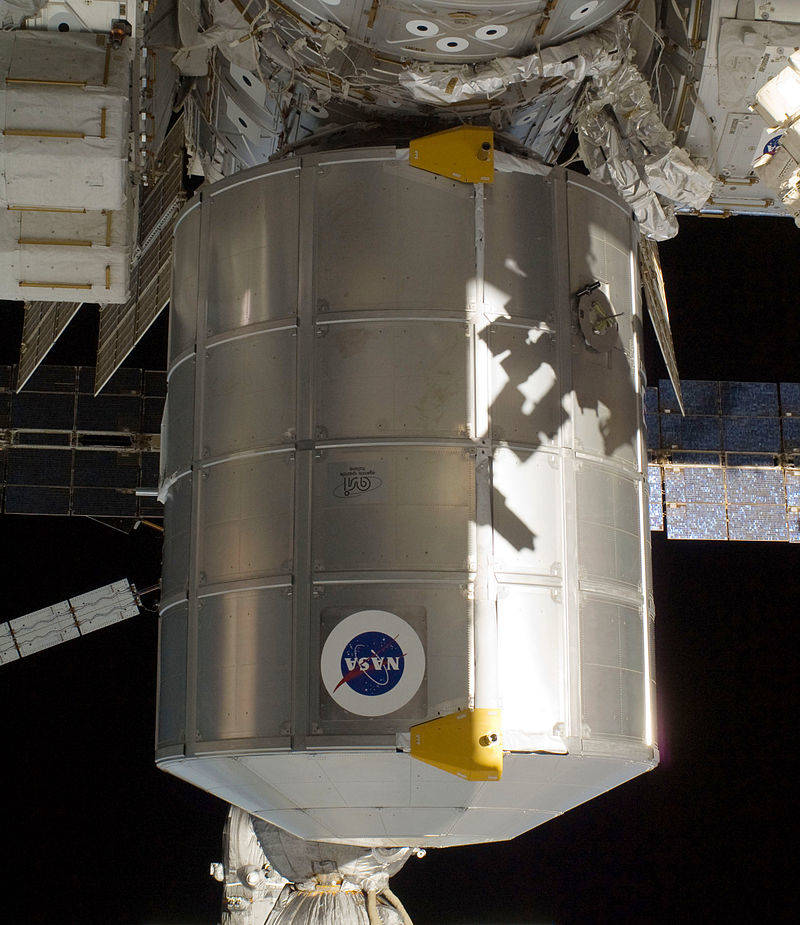
Additions on the last few Space Shuttle missions. Left: One of four ELCs. Middle: The Russian Rassvet research module. Right: The PMM stowage module.
The penultimate Space Shuttle mission brought the Alpha Magnetic Spectrometer (AMS) to ISS in 2011. The large particle physics experiment managed by an international scientific consortium has a permanent home on ISS; results from AMS have advanced our understanding of the universe. The Bigelow Expandable Activity Module (BEAM), an experimental expandable space station module developed by Bigelow Aerospace under contract to NASA, arrived in 2016, the first ISS element launched on a commercial Falcon 9 rocket in the cargo bay of a SpaceX Dragon cargo vehicle. Initially planned to stay on ISS for a limited time, BEAM outperformed its expectations and managers decided to make it a permanent addition, with astronauts using it primarily for stowage. Two additional Dragon vehicles delivered two International Docking Adaptors (IDAs) in 2016 and 2019 that converted two of Harmony’s ports to enable the docking of commercial crew vehicles.


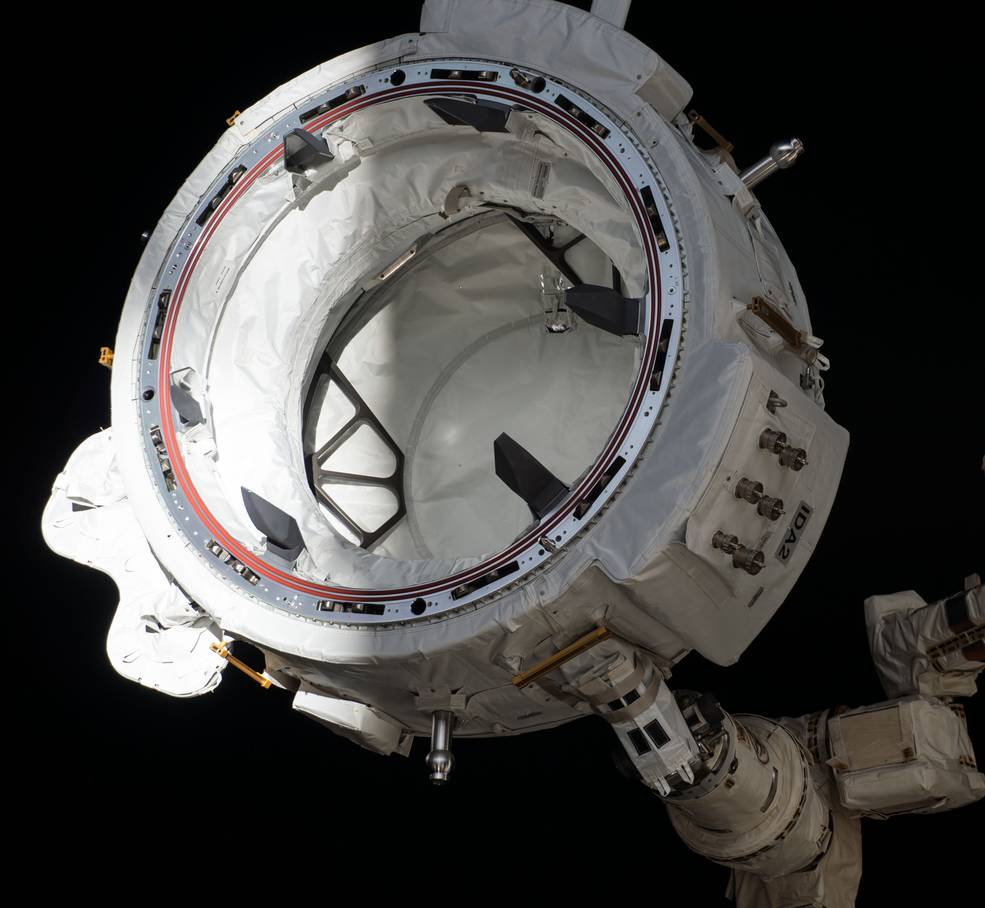
Left: The AMS particle physics experiment. Middle: Four views showing the expansion of the BEAM experimental module. Right: The IDA-2 during removal from the SpaceX transport vehicle.
As noted above, assembly of the USOS is essentially complete. On the Russian side, the Nauka Multipurpose Laboratory Module (MLM), based on the Zarya FGB module, could potentially launch in late 2020, followed by other smaller modules such as the Uzlovoy node module. The modular nature of ISS, however, allows for the addition of new elements and with many more years ahead in the life of the station, opportunities will surely arise possibly to test out new technologies for future programs of human exploration.


Future Russian modules. Left: The Nauka Multipurpose Laboratory Module (MLM). Right: A mockup of the Uzlovoy Node Module.
Today, ISS is the largest space vehicle ever built and a unique microgravity laboratory for conducting research in a wide variety of scientific disciplines. Including its solar arrays, it is as large as a football field. The habitable volume in its various international modules is larger than a six-bedroom house. Since November 2000, more than 230 individuals from 19 countries have visited ISS. As a laboratory, ISS has hosted more than 2,700 scientific investigations from more than 100 countries.

The International Space Station as it appeared in 2018. Zarya is visible at the center of the complex, identifiable by its partially retracted solar arrays.
Watch an animation of the assembly of ISS here.
For more on ISS, visit the International Space Station.
To see ISS fly overhead from where you live or work, visit https://spotthestation.nasa.gov/.





















